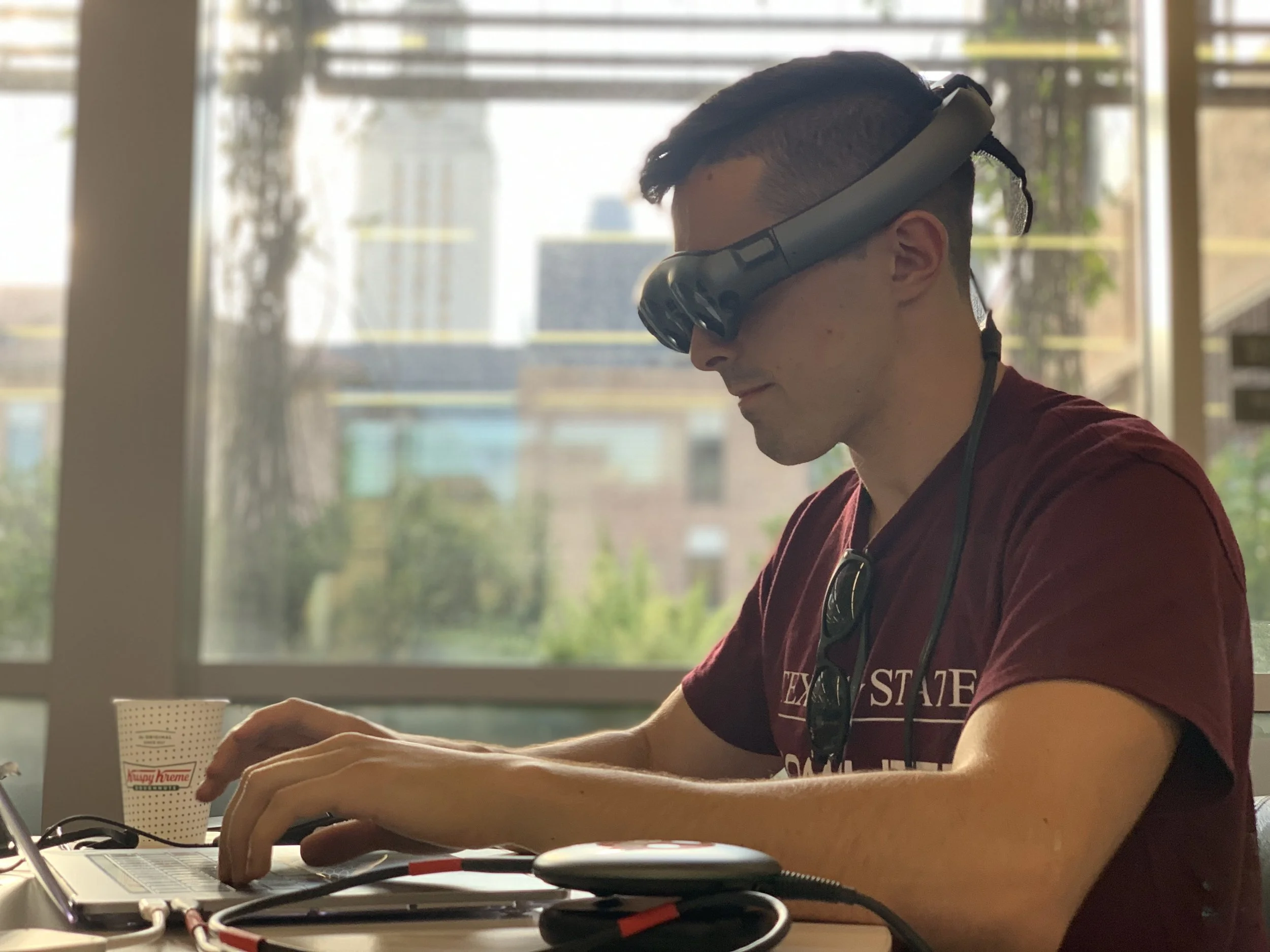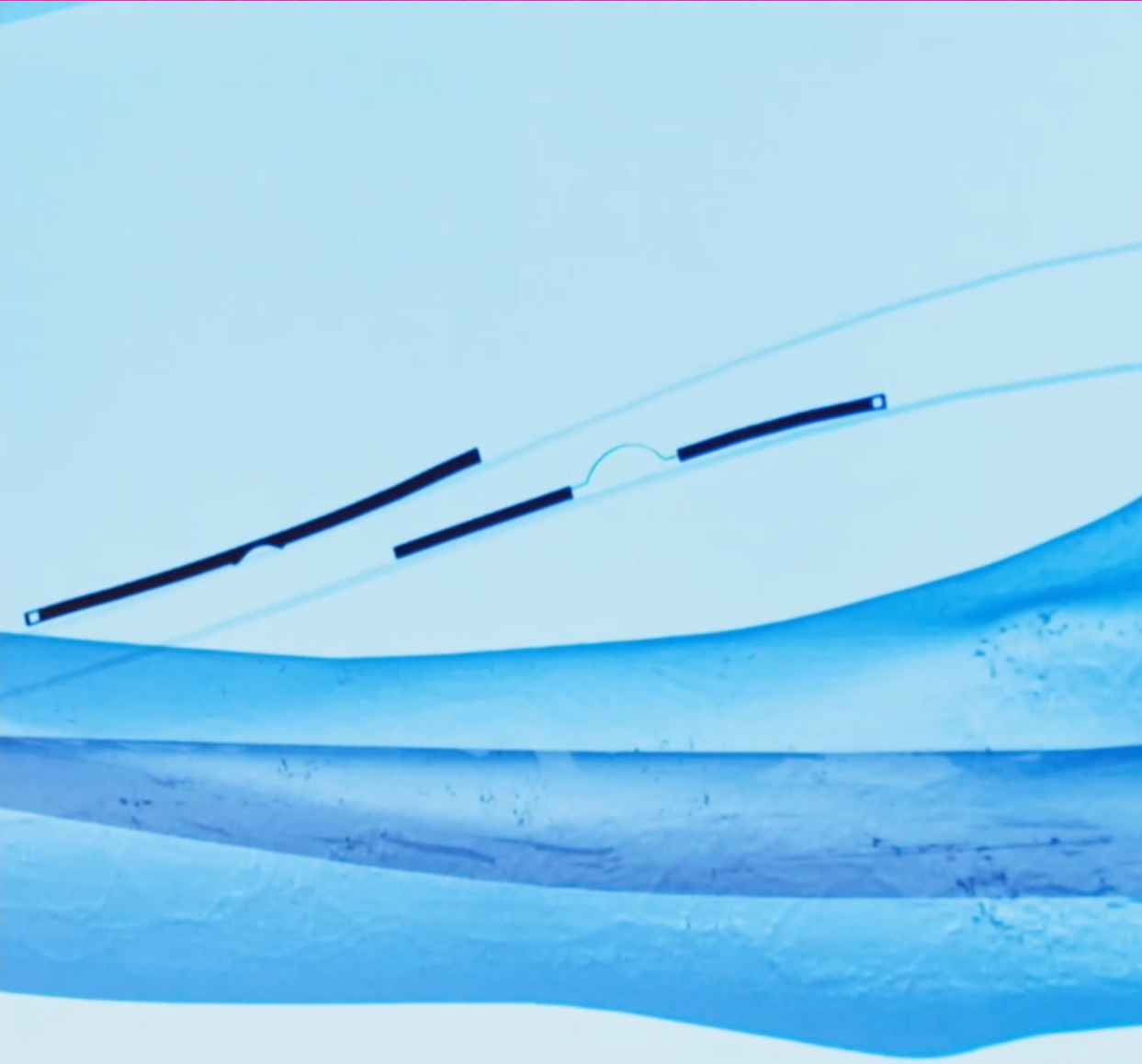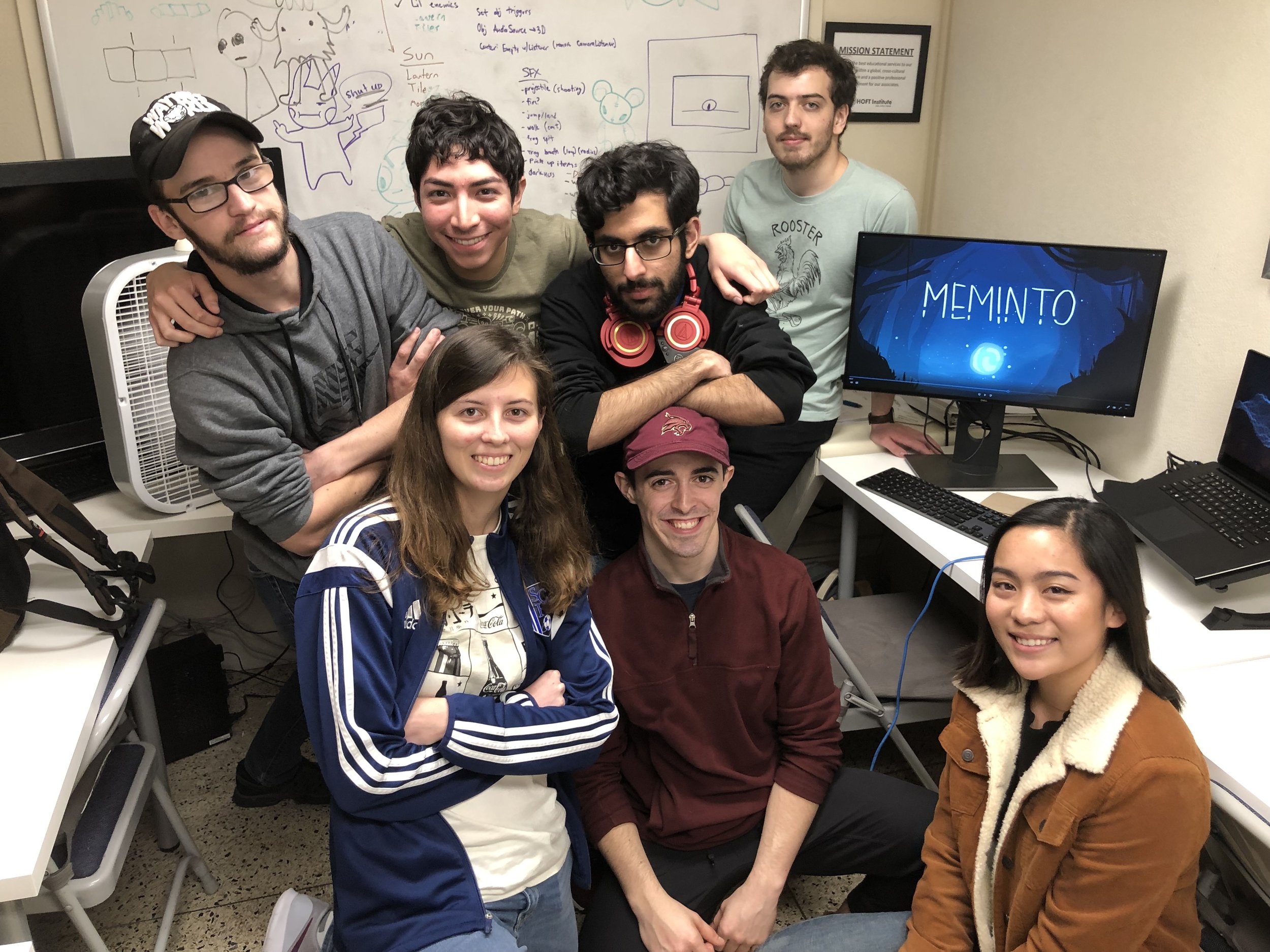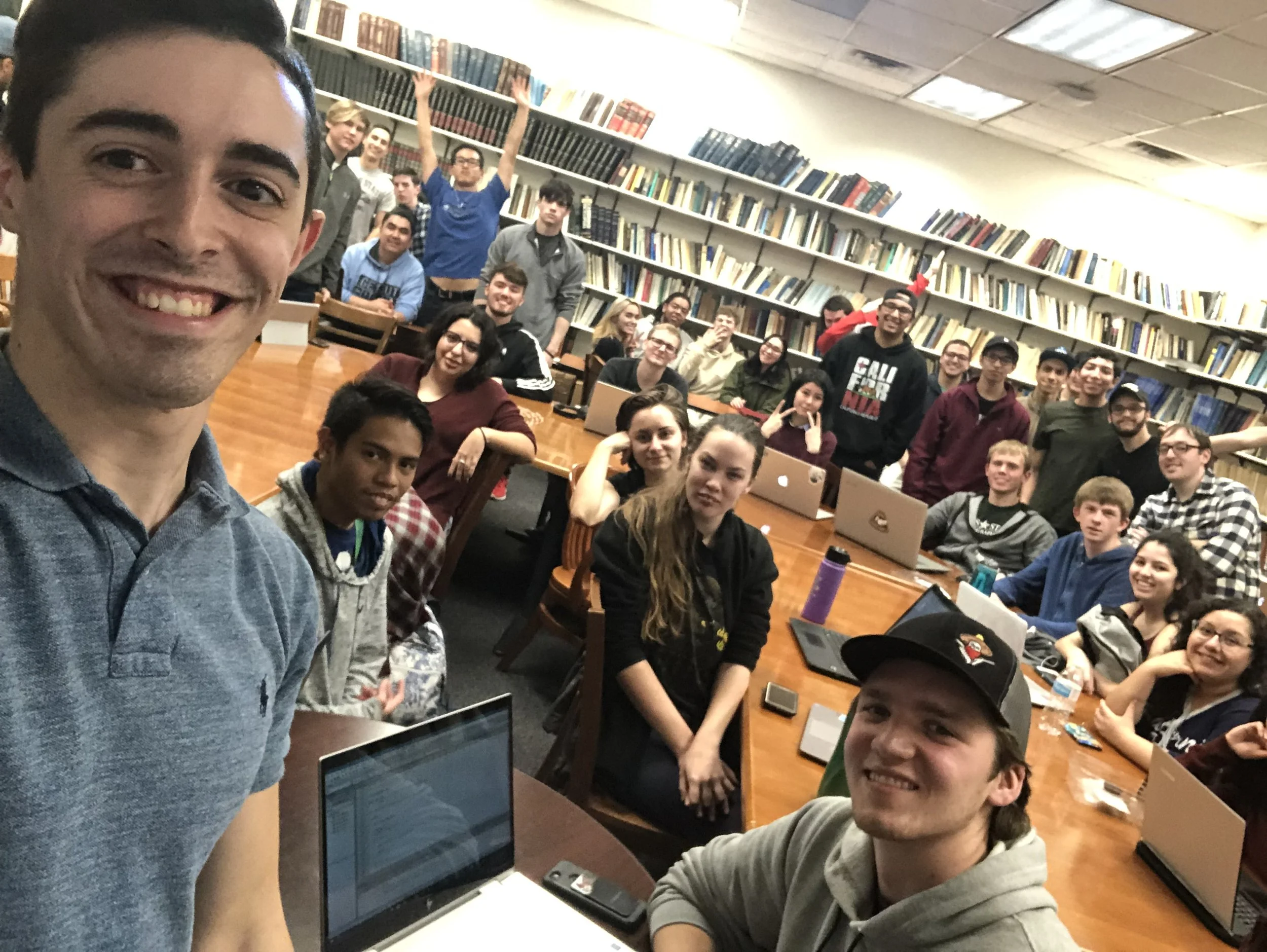Magic Leap sponsored Game Jam at UT Austin
“Meet the Devs” interview livestream (click ^)
Featured Accomplishments
About Me,
I’m Clayton Stamper, a passionate game developer - indie & professional
INDIE SAGA - 2015-Now
I began indie game development in 2015, where I solo-developed and shipped 3 apps and 1 (incomplete) steam game. Now, I’ve started developing “Dungeon Break” with the mission to deliver a “shonen fantasy” through an RPG.
RESEARCH SAGA - 2016-2020
I published two research papers as lead engineer at my university’s VR tech lab. Subsequently, I started and led and the VR Development Student Group, where I received a “Certificate of Outstanding Service” from the university for providing hackathons, seminars, food, equipment, and prizes for 200+ students.
STARTUP SAGA - 2019-2020
At Spatial Cinematics, we developed a variety of commercial software for education/training. I contributed 3D modeling, shaders, and optimizing for mobile, VR, and web platforms in addition to programming.
AAA SAGA - 2020-Now
Ashes of Creation targets unprecedented scale for a seamless open world (10k CCU + 1k local density) in UE5. I led the narrative engineering team to “Alpha 2” launch, spearheading various client & server-side solutions. My team of four engineers delivered content systems for: quests, events, dialog, interactables, FTUE (first-time user experience), character customization, and more.
2025 - Dev Log
Ashes Alpha 2 (Phase 3) Launch
My narrative team was dissolved, and I was moved to the “vehicles & mounts team”, where I implemented:
Rewrote NetCode for interserver hostility queries
Implemented Siege vehicle deployable items
Componentized and hardened alignments, decoupling them from game types
Seamless mounting/dismounting mechanics
Auto follow (recycled auto-pathing tech from mounting)
Core Service implementation - generalized actor tracking service & components
Dungeon Break v0.3.1
At the start of 2025, I made the ever-so difficult decision to scrap my 0.2 iteration of Dungeon Break, my indie game. The game mechanics were too complex to scale content pipelines as a solo dev, so I redesigned it. Instead 3D action-combat, I converted to 2.5D RTS-lite mechanics.
2024 - Dev Log
Dungeon Break v0.2
I scrapped v0.1, keeping the fast-paced action combat, but significantly reducing the scope of moment-to-moment gameplay; instead of an over the shoulder perspective with 3D flight mechanics, I opted for a simpler top-down perspective, and a souls-lite animation driven combat.
Ashes Alpha 2 Launch
Intrepid’s biggest launch yet, and I was in a pseudo-lead position for narrative engineering. I crunched throughout the year to compensate for tech debt accumulated by livestreams, but the launch was successful.
The narrative event system held strong, supporting hundreds of concurrent participants within a single event, split seamlessly across 4 server-workers. (ex. timestamped link)
The character creator saw regression in quality, but its content pipeline opened to the art team, supporting 5 races at launch (surpassing our targeted 3 races).
2023 - Dev Log
Founding a Narrative Team
This is a slide from my approved proposal to lead game-engineering for narrative and graphical systems.
“You have earned the ability, through your work ethic, through your work quality, through your dedication and passion, to come and say […] that I have a friend who would be fucking awesome, and I need help making this shit for Alpha 2.” - Steven Shariff, CEO.
Just prior to this, I had been temporarily allocated to the economy team as an IC, where I implemented vendors, reward tables, currency, and (backend) seasons & weather systems.
Afterward, I made more notable individual contributions:
Character Alignments: our dynamic hostility system
Service Template Packet Macros: unified the gameplay team’s integration of IntrepidNet core services at large
Event System Livestream
note: watch the attached video for my livestreamed interview
To culminate my efforts for the year at Intrepid, my narrative event system dynamically spawns content into single occupant locales.
IntrepidNet (Intrepid’s server-meshing backend) was brand new, so the event system was ported from a UE subsystem to an INet service at the start of the year, synchronizing shared content delivery seamlessly across spatial server boundaries.
2022 - Dev Log
Animation Studies
note: full portolio breakdown, here
Working on Ashes Creation revealed a gap in my technical knowledge: animation. To grow from this, I followed multiple tutorial series to practice my animation skills, with P2Design Academy being my preferred learning resource.
Moreover, my animation pipeline was uncertain for v0.1 (“Project MC”) of Dungeon Break. With that (among other reasons), I scrapped that prototype, and I started on v0.2 with the gameplay centered around animation. Combat was souls-lite, but the animation-centric combat design ultimately constrained my content pipeline; making a single NPC was too expensive.
Best-in-Class Character Creator
note: watch the attached video for my livestreamed interview
After my technical proposal our CEO requested that I author and disseminate a template for future proposals: he liked the pitch. I worked with artists to define asset standards, implemented our character shader in UE5’s material graph, and then led 1-month striketeam with 18 contributors.
Using joints, morphs, and materials, each preset was authored in-engine using the creator within a continuous range of graphical traits.
p.s.: yes, we made Asmongold as a preset, and we made him bald
2021 - Dev Log
Ashes of Creation Alpha 1
My career with Intrepid hit significant turning point after 7 months. From fixing bugs to implementing minor features, I was eventually designated “owner” of our narrative event system. Sadly, the system fell short of our Alpha 1 testing window, because of packaged-only bugs related to server meshing.
Key Contributions:
Character rendering optimizations: UDIM based draw call batching and dynamic mesh merging
Cheater detection and CS tooling for identifying and banning bad actors
Project MC is Born
My mission began: “deliver the shonen anime fantasy through an RPG.” I started designing, prototyping, concepting, and writing with this goal in mind, but very little of that work survived to “Dungeon Break" being formalized as the shipped title.
This prototype targeted a very literal interpretation of the shonen fantasy, with 3D flight mechanics, fast paced action combat, and destructible environments.
2020 - Dev Log
ARTS VR Training Simulation
This training simulation was made in Unity3D for the BD WavelinQ™ procedure, where two magnetic catheters are used to create an AV fistula without open surgery.
I retopologized the provided .stl scan of a patient’s blood vessel to have uniform edge loops. From there, I wrote a C# to bake splines nodes into the center point of each edge loop. I rigged the catheter with 5 joints on each side, and drove IK targets along the spline.
I wrote shaders to render the simulation like a fluoroscopy, including a fluid-sim shader for the blood vessels to simulate ink injections.
Skateboards.com 3D Studio
note: see full portfolio piece here
At Spatial Cinematics, we built a web studio for customizing purchasable skate boards in 3D. I modeled the wheels, trucks, and board in Blender, and I authored the textures in Substance Painter.
To iterate more rapidly on the skate-park assets, I baked substance smart material masks into vertex color channels on the mesh.
2019 - Dev Log
First Shipped Steam Title
“Tuition” was a sort of capstone project in my indie, game development studies. I published it on Steam, but it was never actually finished. As a “game”, Tuition sucked. It had potential, but it ended up being a glorified tech demo; the technical features were there, but it needed content. Features included:
Gunplay with VFX, SFX, and hit impulse physics
Knives and swords that could visually “cut” targets.
Climbing
Fortified defenses / barriers that zombies would tear through
Wave-based spawn mechanics, modeled as logistic growth
Global Gam Jam 2019
There wasn’t an official “runner up” designation, but a judge told me after voting that our entry was 1 vote away from best-in show.
It was an ominous 2D platformer with a unique approach to combat, where a lantern (i.e. your weapon) lazily followed behind your pawn.
2018 - Dev Log
More is on the way…
Collecting some of my older portfolio pieces is a challenge, but I plan to highlight my development & growth all the way back to 2015
Shogi World
This was the 3rd app that I published on both app stores (Android & Apple). Shogi is a Japanese sibling to Chess, and apps rarely have English pieces. Additionally, it’s uncommon to indicate possible moves, which essential for new players (like most of my friends)
I made this app because I loved Shogi, and I had a road trip scheduled with my friend across the country, and we needed something to play.
Technical Features:
Minimax algorithm for AI.
Local Co-op
Complete list of settings










